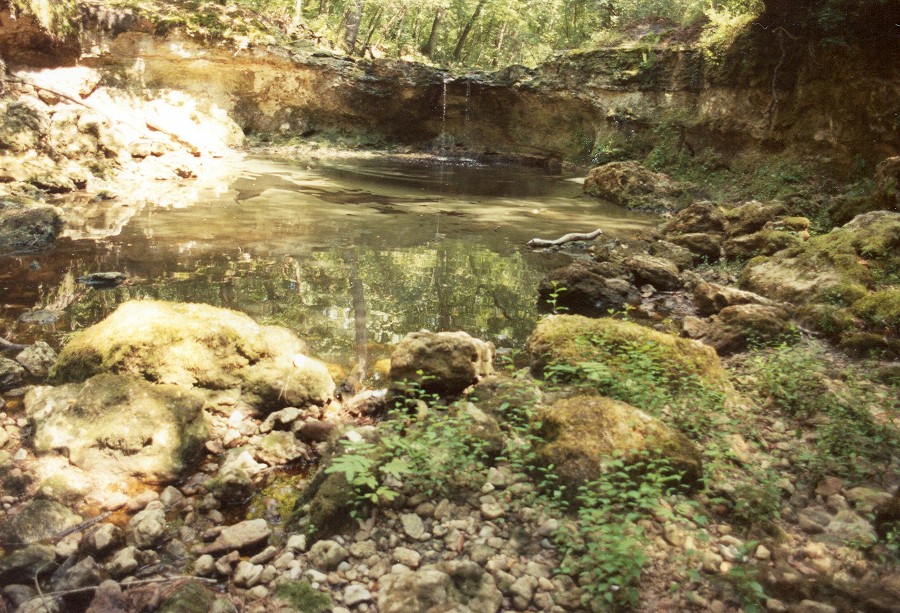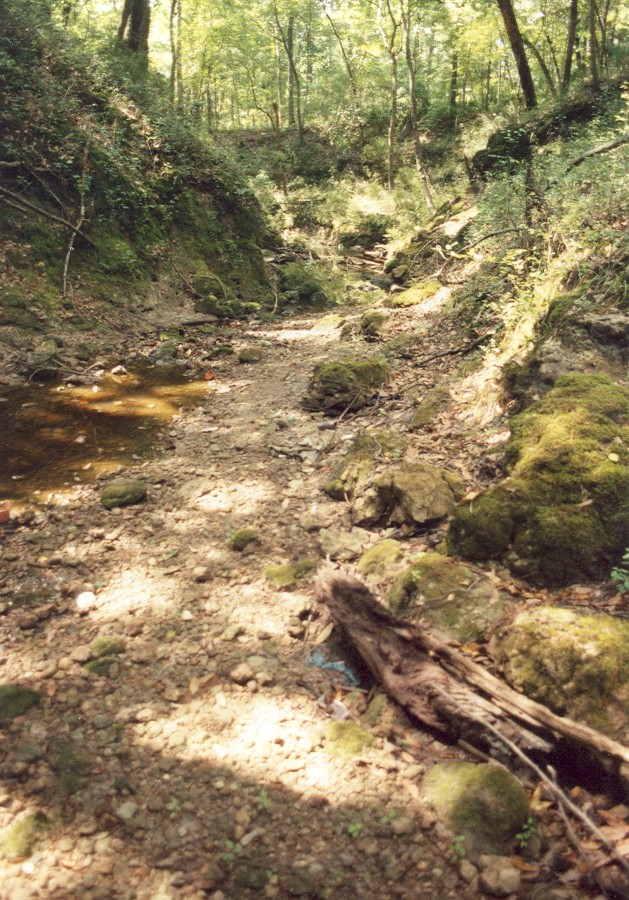Falling Creek, Florida (August 2006)
![]()
"You ever heard of 'Falling Creek, Florida'?" That was the question emailed to me by an adventure companion on a hot summer night.
Having spent over 20 years seeking out adventure venues in Florida, I am stunned and intrigued to realize that I have not ever heard of such a place.
Immediately, I go to Google, the 21st Century Oracle, to learn what I can. One of the first hits is a web page by a local friend, John Moran, who is an impressive professional photographer capturing astounding, magnificent images of the natural world. A click to his page brings up a completely unexpected scene of a Florida landscape. On my screen is an image of an 8- to 10-foot tall WATERFALL. And the view is graced with an equally astonishing feature for Florida: A blanket of SNOW.
My god.
How is it possible that I have lived only an hour from such a geologically spectacular place for 20 years without having ever heard of it?
Instantly, I start making plans to visit. Is the creek navigable? (the thought is that we could perhaps kayak over the falls) Water levels reported on the USGS website are showing lower-than-normal water levels for nearby rivers, which indicates that Falling Creek is almost certainly low (the month of August has been rather dry throughout Florida). We decide not to take our kayaks, as the likely discovery that the creek is too low to paddle would create kayak theft concerns.
I point out to my friend, however, that I will be terribly disappointed if, on our "reconnaissance" mission to the creek, that the creek ends up being navigable.
We drive up on a Sunday morning with our ever-present Delormes map booklet. The plan is to drive to each of the bridge crossings with Falling Creek to have a look.
Each time we look down from a bridge, the story is the same. Water level too low.
Finally, we arrive where Delormes has written the word "falls" along the creek. We drive down every nearby road into all housing developments nearby. No access. No trespassing. Don't even THINK of parking here. A roadside sign near the creek crossing tells motorists not to park here. To park only at the "designated" access area.
Well, where are we to find this designated access?
Just before we decide to park at a historic wooden church in the vicinity, we drive down the road and accidentally stumble upon a parking area with an information kiosk for the falls that has been set up by the Suwannee Water Management District. Eureka!
Here there is a concrete walkway leading to a long wood boardwalk that takes visitors to the falls.

Upon arrival at the boardwalk overlook, we are greeted by a sight that is completely unexpected in Florida. Falling Creek reaches a limestone cliff where water drops about 10 feet into a pool of water. At high water levels, there would be no falls at all, as it would be submerged by the water. Today, the creek is so low that there is barely a trickle going over the "precipice." Still, it is a very impressive, first-time-ever-in-Florida sight for seasoned Floridians such as us.
Downstream from the falls is more astonishment. Lying in the nearly dry creek bed is a collection of large limestone boulders flanked by 15-30 foot tall steep slopes (nearly cliff-like) on each side, forming what appears to be a mountain valley containing strewn granite boulders.
Completely unexpected and unheard of. Mountain ravine and boulders in flat, sandy Florida???? Fed by a waterfall??? Again, how is it possible that I have not heard of this before? My conclusion is this: For a reason I am unable to explain, Falling Creek does not seem to be spring-fed (spring-fed rivers tend to have a regular "base-flow" of water even in dry conditions, and are almost never dry, as is Falling Creek on this day of our visit). How could it be that in this limestone geology that the creek flows through, and where nearly all Florida streams are fed by springs, can Falling Creek be unfed by springs?
Assuming that without springs, Falling Creek is most always quite low in water level, the falls are usually only a trickle or otherwise not in existence. Only rarely is there enough rainfall to fill the creek sufficiently to create a roaring waterfall.

That would explain the fact that I have not heard of the falls previously. And for the lack of substantial tourist facilities. The area has been settled for some time (the historic church was built in 1855), but has never been the site of major tourism. Instead, there have only been gristmills, scattered housing, slave holdings and religiously-inspired visits to the falls over the past 150 to 200 years.
Had the creek been spring-fed, the falls would be regular enough to be a meaningful attraction. Instead, it exists in relative obscurity.
Perhaps this is fortunate, as too often, tourism degrades the experience of these natural wonders. Expect the unexpected at Falling Creek.
Back to Dom's Voyages and Adventures page.